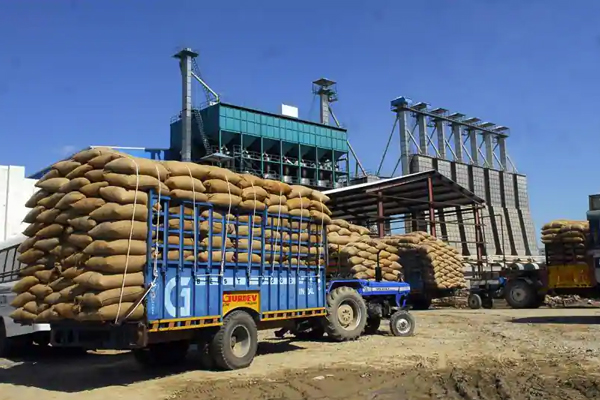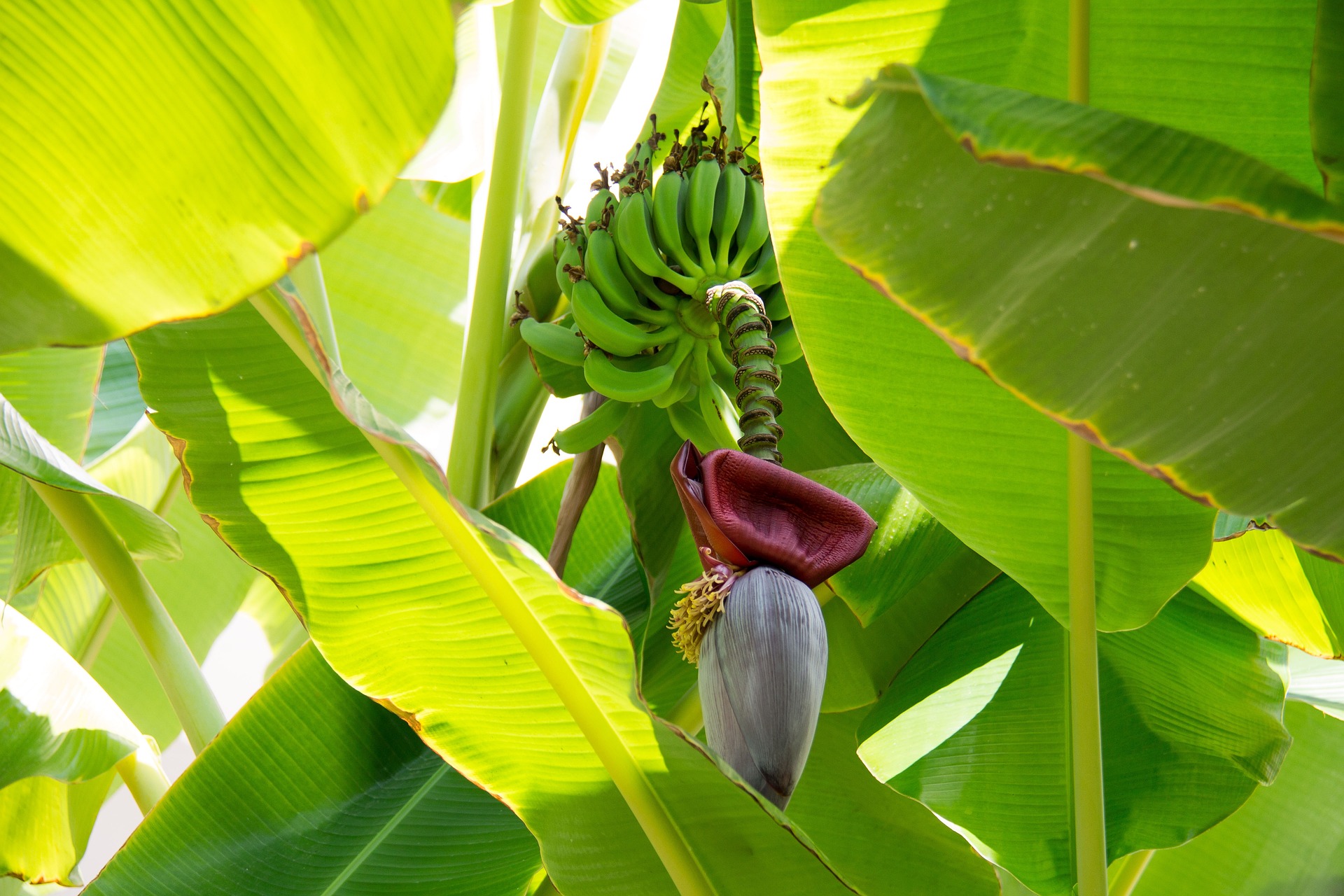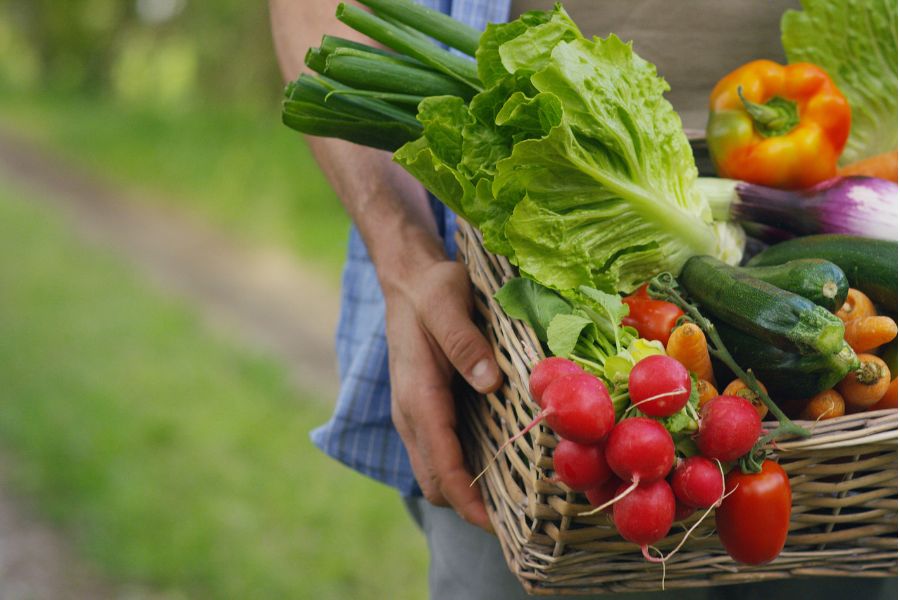Mainstreaming India’s agricultural exports post-COVID-19
Dr Harbir Singh and Dr Alka Singh, ICAR-Indian Agricultural Research Institute, New Delhi, discuss the emerging international scenario in agricultural trade, and how India can better utilise its strengths and policy support to develop agricultural supply chains and improve export earnings.

Image credit: Hindustan Times
The COVID-19 pandemic has exposed the world to unprecedented public health, social and economic challenges. The pandemic and subsequent lockdown have brought the Indian economy, and also other world economies, to a grinding halt. In a rather gloomy scenario caused by Coronavirus, agriculture has been a shining spot for India with record food grain production of 295.65 million tons in 2019-20, which points to the resilience of the sector, especially concerning food security. But if the bumper harvest is not managed properly, it may result in further dampening of farm prices and consequent decline in farm incomes as well as overall economic growth. Similarly, streamlining of other major agri-exports such as spices, meat, shrimps & prawns, etc. demands a reorientation of the export strategy for moving towards sustainable agricultural growth and a rebound of overall economic growth.
As of now, the IMF has slashed India’s growth estimate (estimated at 5.8% in January 2020) for 2020-21 to 1.9%1. The SBI Ecowrap also projects a 4.1% decline in GDP growth for FY’20, and for FY’21, the real GDP growth is estimated at 1.1%2. The recently announced economic stimulus package (3rd installment) by Finance Minister aims at sweeping reforms for the farm sector, including a new central law to allow farmers to sell their produce freely and get better prices as well as a ₹1.5-lakh-crore package to strengthen infrastructure and logistics to help value addition. These policy measures are supposed to strengthen the agricultural supply chain and give a major boost to agricultural exports also. Needless to say, the government has been striving hard by announcing pro-active policy measures to pull back the economy from the shadows of the COVID-19 pandemic. The revival package for MSME sector, infrastructure support for agriculture sector and incentivizing private sector participation in procurement of agricultural produce are some of these initiatives.
India has an edge in the production of several agricultural commodities and has a vast potential in contributing to international food trade on account of its agro-climatic conditions that give rise to a diverse food basket. Though the country has emerged as a major exporter of rice, cotton, and buffalo meat over the last decade with exports touching Rs.2.7 lakh crore and imports at Rs.1.37 lakh crore in 2018-19, the share of agricultural exports in global exports has been hovering around 2% only. India’s low exposure to international markets prevents millions of smallholders across the country from reaping benefits of expanding global markets. Our agri-exports are lower than countries like Thailand and Indonesia with a much smaller arable land area.
Further, the demand for Indian agri-exports is likely to see a huge transition, especially in the post-COVID-19 scenario, as countries across the globe might follow more protectionist policies. This would provide more opportunities to those countries, which can ensure the development of a technically reliable and vibrant agricultural supply chain. This calls for an urgent need to re-energize our agri-export sector to achieve its potential and to realize the vision of doubling farmers’ incomes by 2022.
Agricultural exports are mainly affected by changes in international demand, price volatility, currency movements, and international economic and political developments like trade restrictions, tariffs, and non-tariff barriers, etc. Therefore, a long-term strategy for leveraging India’s agri-export potential necessitates a major thrust on the following key areas.
Supply and demand-side constraints
Despite record foodgrains production, the farm productivity levels are far lower in comparison to global levels. The experimental results show that productivity potential of improved farm technologies is substantially higher than that realized at the farm level. The diverse technology portfolio of the Indian National Agricultural Research System (NARS) has the potential to fill these productivity gaps. This may be expedited by empowering farmers with user-friendly and affordable digital platforms for timely access to agro-advisories, quality inputs and market choices.
Lack of awareness of market demand and export-import regulations also hamper farmers’ capabilities to take advantage of the agri-export opportunities. To leverage the full potential of digital platforms, we must build capacities and skills among producers to align their product portfolios in line with consumers’ demand in importing countries. Further, investment in agricultural R&D and extension – which is only 0.5% of agri-GDP – is of utmost importance to enhance our global competitiveness. Maintaining export competitiveness would require an innovation system where different stakeholders coordinate with each other and there is learning across the supply chain (pre- and post-harvest research, grading, standards, packaging, marketing, regulations, extension, and input market policy).
The country-wide presence of Krishi Vigyan Kendras (KVKs) can play a pivotal role in not only promoting digital literacy, but also providing export-oriented technology to farmers and creating awareness among them. The role of KVKs can be made more effective with a clear roadmap and capacity building of KVK personnel. This is amply evident from export of Basmati rice, where India is a world leader (Rs.328 billion earnings in 2018-19), and Pusa Basmati varieties are the major contributor.
To tap export opportunities, we should identify districts where export-oriented crops are grown or have the potential. For example, the One District, One Product (ODOP) Programme of Uttar Pradesh aims to encourage such indigenous and specialized products and crafts in the state that are found nowhere else – like the ancient and nutritious ‘kala namak‘ rice, and the rare and intriguing wheat-stalk craft, just to list a few. Identification of product-specific rural clusters scheme is one such good example to follow. At the same time, policy emphasis needs to be directed towards the North-Eastern region, which has the potential to capitalize on rising export demand for fresh and processed fruits and vegetables, especially those produced in an environmentally friendly manner.
One of the key determinants of export success in target export markets would be to raise product quality and safety standards to meet strong consumer preferences on account of rising incomes. These markets would like to import from those countries where production, post-harvest processing and value addition of farm products are carried out by adhering to strict quality measures (GAP, HACCP, SPS measures, etc). Further, our food systems are largely labour intensive with little automation along the value chain.
This makes our exports more vulnerable to social distancing regulations, which would demand enforcement of strict guidelines regarding worker movement, enforcing new safety protocols, and supplying workers with adequate protection in the time ahead. But all these measures need a lot of hand-holding of farmers and farmers’ groups. The farmer producer organization (FPO) – an emerging institutional innovation –can play an important role in the post-Covid 19 scenarios.
Agricultural supply chains
There is no denying the fact that the agricultural supply chains in the country suffer from major bottlenecks in logistics. Despite taking these series of hits, the benefits on account of improved logistics can make our agri-exports significantly competitive in the global market place. Agri-supply chains may be made more efficient if they deal with FPOs and cooperatives, which can overcome the limitation of scale – provided their capacities are strengthened –and extend their reach to distant markets as an aggregation of agri-produce from a large number of smaller farms holdings adds to the marketing cost.
Even in the domestic market, 5-6 intermediaries are involved in moving the produce from farmer to consumer, and the mark up in the supply chain is very high (60-70%). Thus, inefficiencies in the supply chain lead to high mark up and price spread resulting in loss of price competitiveness in the global markets. Given the perishable nature and stringent import standards for most agri-commodities, robust infrastructure is a critical component of a robust agricultural value chain.
It is expected that the latest stimulus package for agriculture would give a much-needed boost to public investments in the creation of adequate pre-harvest and post-harvest handling facilities, storage, cold chains, processing, and packaging facilities, and also give a boost to agricultural exports. Past studies show that returns on investment for the creation of such types of infrastructure are bound to be very high. Increasing agricultural exports will have a number of positive externalities, like better price realization for farmers, increased awareness about good agricultural practices, greater thrust on quality to cater to the consumers’ demand from other countries and more focus on value addition, packaging, branding, etc.
Pre-condition for private sector participation
The policy signals emerging from the economy do affect private sector participation. There were several commentaries in the business pages that many firms will relocate from China in the post-COVID scenario, but according to a recent study by Nomura3, out of 56 companies shifting base from China, a mere 3 companies preferred India, while 26 decided to relocate to Vietnam, 11 firms chose Taiwan and 8 companies preferred Thailand. It may be inferred that the ease of doing business is one of the most important factors for private firms to choose their base of operation.
In the case of agriculture, the existing market infrastructure is highly inadequate to handle record farm production. Recognizing these limitations, the present government has been encouraging the states to adopt model marketing legislation, which has incentives for private sector participation in supply chains that are justified, reasonable and WTO compliant. But the experiences even from those states, which have adopted model legislation, show that adequate investments are not forthcoming from the private sector. One of the reasons for such poor response by the private sector was often cited as inadequate transparency in the implementation of these policy measures. Particularly, the stockholding provisions of the Essential Commodities Act (ECA), 1955 were often cited as one of the major hurdles in attracting private sector investment in storage and logistics.
In this regard, the pro-active policy decisions of the present government bode well for attracting private investments in supply chain logistics. This has been made possible by promulgating three ordinances4, which ease the restrictions on stock holding limit of essential commodities, provide an alternate channel of intra-state and inter-state barrier-free farm trade, and price assurance to farmers for entering into contract production with the private sector. It is expected that these reforms would provide much-needed incentives to the private sector and attract substantial investment for strengthening the supply chain logistics and improving marketing efficiency.
Export diversification and market promotion
In the changing trade scenario at the global level, the country needs to diversify its export markets to cope up with the expectations of the importing countries. The plan includes cutting down import dependence, especially from China, by focusing aggressively on import substitution while improving safety compliance and quality to gain higher share in the global market. For example, India presently leads in basmati rice export, a high-value commodity, and almost 70% of its exports are towards Middle East countries, which have been recently grappling with geo-political tensions and declining oil prices, which may put strains on our basmati exports. Hence, as part of our strategy, agri-export targets should be niche markets such as the US, UK, Canada & CIS countries for higher value realization.
Market imperfections are another major hurdle in reaping agri-export potential. Use of best agricultural marketing practices (grading, labeling & branding) is crucial for assured quality and traceability of agri-produce. Emphasis on agri-processing and promotion of ‘brands’ for select agri-products (e.g., basmati rice, fortified food products, fruits, and GI tag products) have the potential not only for higher-value realization, but also to further expand the Indian agri-exports basket.
For example, there is immense scope to exploit the healthy attributes of low erucic acid edible oil in the export market, as our research institutions have developed such oilseeds varieties. Further, marketing and branding of organic products and developing uniform quality and packaging standards for organic and niche products will help attract importing countries towards India. The ICAR has developed several varieties of biofortified crops/products4 which need to be promoted with more R&D support for quality and traceability and to develop nutrition-sensitive agriculture.
In conclusion
In the post-COVID-19 scenario, to bring the economy on track, particularly the agricultural sector, would require a reorientation of focus on key issues so as to leverage the full potential of the government policy support for developing agricultural supply chains. The recent changes in the Essential Commodities Act and promulgation of farm trade and price assurance ordinances are expected to enhance private sector participation in agricultural marketing and trade of farm products. The various issues discussed above and the suggested policy measures are supposed to strengthen agricultural value chains and give a major boost to agricultural export earnings, which ultimately will result in the realization of higher farm incomes.

Dr Harbir Singh is Principal Scientist (Agricultural Economics) in the Division of Agricultural Economics at ICAR-Indian Agricultural Research Institute, New Delhi. He did his post graduation from GB Pant University of Agriculture and Technology, Pantnagar, and earned doctorate degree from NDRI Karnal. He worked as scientist (Agricultural Economics) on technology policy issues at the ICAR-National Institute of Agricultural Economics and Policy Research, New Delhi till 2011. He also worked as Principal Scientist (Agril. Economics) at ICAR-Indian Institute of Farming Systems Research, Modipuram till June 2019. His research interests include agricultural growth and development, particularly seed systems of different crops, IPRs in agriculture, integrated farming system models, climate change impact on different farming systems and marketing reforms for enhancing smallholder farm incomes.

Dr. Alka Singh is the Professor and Head of the Division of Agricultural Economics at ICAR-Indian Agricultural Research Institute, New Delhi. She earned her Ph.D. in Agricultural Economics from G.B. Pant University of Agricultural and Technology, Pantnagar. Dr. Alka has a strong research background of about 25 years along with the teaching experience of 23 years. Her areas of specialization are Science & Technology policy, Technology Evaluation and Impact assessment, Agricultural Development and Policy.













Thankyou for this Informative Article. This Article is very Helpful for everyone especially for those who wants to know about agriculture and agri-commodity. if you want to know some more about Agri-Commodity you can visit this Blog:- https://blog.tr
Thank you for such lovely content on crop disease, loved to read this blog on